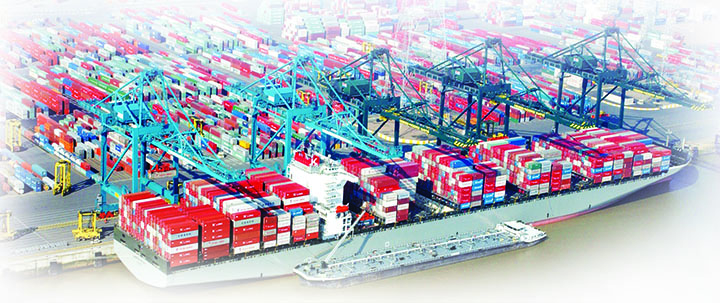 In the present era of international trade and a globally integrated market, ports act as a lifeline for transnational trade. In this regard, the efficiency of ports becomes increasingly important and is dependent on the efficacy of their port management system.
In the present era of international trade and a globally integrated market, ports act as a lifeline for transnational trade. In this regard, the efficiency of ports becomes increasingly important and is dependent on the efficacy of their port management system.
According to a United Nation’s research paper titled, ‘Port performance indicators’, port performance indicators can be broadly subdivided into financial indicators and operational indicators. These indicators can be used to rate the performance of a port and to enhance its productivity.
Financial indicators of port efficiency revolve around the revenue generated by a port vis-a-vis the operational costs. Globally, port authorities are focusing on improving their productivity by enhancing their economic viability. The port administration must have a management system in place which gives their facility a comparative advantage in terms of tariff and at the same time, ensure its profitability.
From the perspective of port management systems, the second category of indicators is of more direct concern. These indicators are based on the number of ships arriving and the efficiency with which cargo is handled. An excellent indicator of port management is the quantity of cargo worked per hour per ship in a port. For maintaining such data, there should be access to information of arrival and departure of ships and the quantity of cargo loaded or unloaded for each ship. In addition to this, total hours spent by a ship at a berth also needs to be recorded.
Port efficiency depends on the arrival rate and waiting time of a port. On a monthly basis arrival rate refers to the number of ships coming to a port in a month, divided by the number of days in that month whereas waiting time refers to the total time between arrival and berthing of all ships, divided by the number of berthing ships. The third important indicator is service time which refers to the total time between berthing and departure for all ships divided by the number of ships. Similarly, turnaround time refers to time spent by a ship in the port between its arrival and departure. The lower the turnaround time, the higher is the port’s efficiency. Apart from these important indicators, there are some indicators that deal with the level of efficiency of a port in terms of cargo management.
In this globally competitive market, ports need to focus on their client redressal mechanism. As ports involve a heavy share of international cargo, there is a plethora of paperwork associated with it. Indian ports are rapidly following the international trend of putting in place a single window system for clearances and paper work. The efficiency of any port depends on the ease of doing business in that facility and Indian ports are developing themselves in this regard.
Globally, ports are sites of transactions of high value goods. In underdeveloped and developing countries, ports are often associated with less scrupulous activities like pilfering and smuggling. According to Gautam Chakraborti, Security Adviser of Kolkata Port Trust, “A port needs to send the message that it’s safe for the cargo that arrives there. Instances of pilfering were very common in the Kolkata Port and have now reduced because of different decisions taken by the port management.” The security aspect is also an important indicator related to efficiency of ports and needs to be considered by an efficient port management system. He also highlighted that the Kolkata Port Trust has pulled down its tariffs to attract more traffic. Additionally, the local administration has a role to play in an efficient port management system. The local administration needs to take care of a swift, congestion less and hassle free communication channel to a port. It has to ensure that its taxation policy attract cargo movement of a port. Security also needs to be looked into by the local administration.
Indian ports lag behind global ports in terms of efficient port management systems. Maintenance and upgradation of existing ports will unfurl numerous economic opportunities for the country. The development of ports through Public Private Partnership (PPP) may enhance efficiency of Indian ports but the government needs to install infrastructure, which will attract private players to invest in this sector.Rovit am et eliciet.
Add new comment